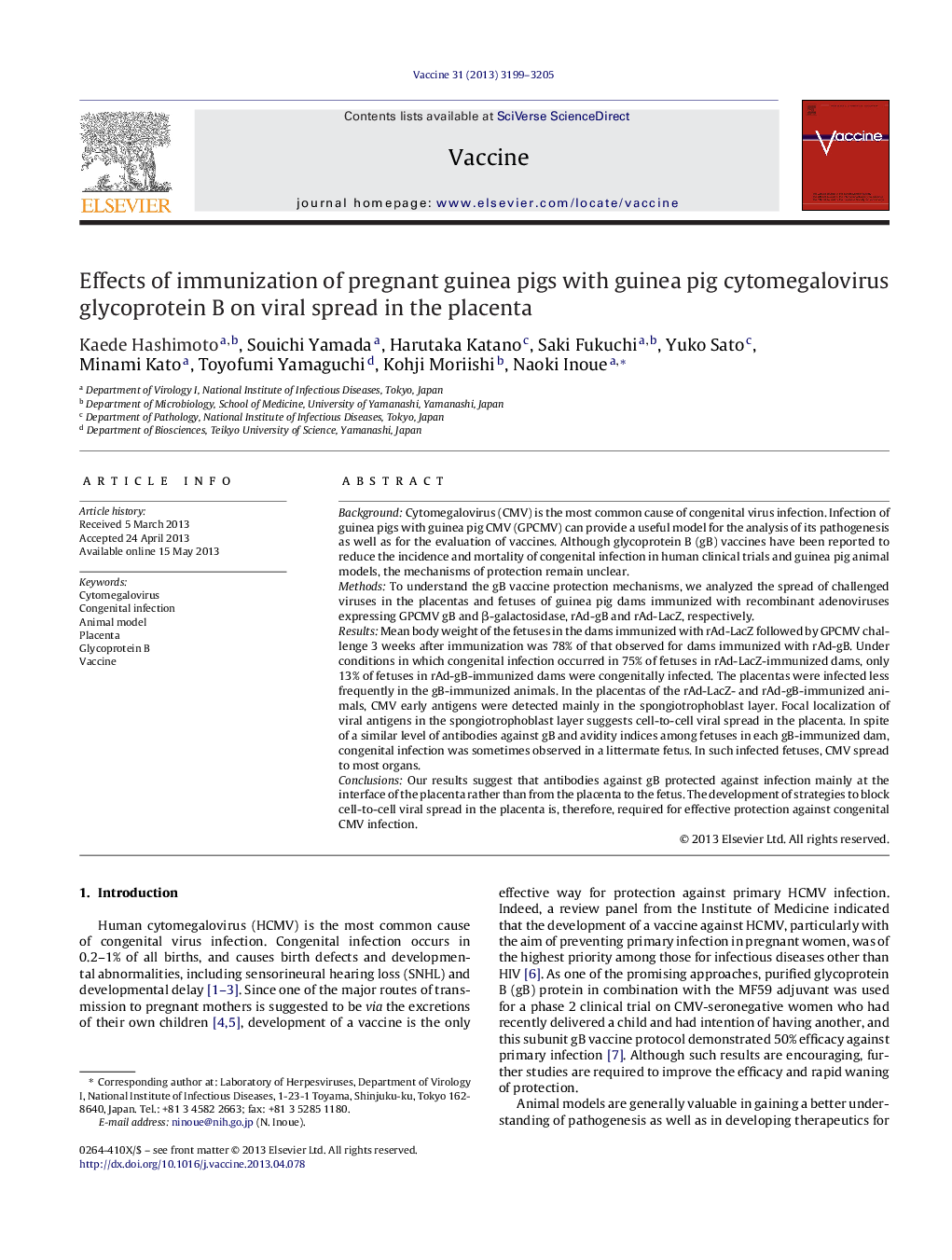| Article ID | Journal | Published Year | Pages | File Type |
|---|---|---|---|---|
| 2402571 | Vaccine | 2013 | 7 Pages |
•Mechanism of gB vaccine protection for congenital CMV infection in an animal model.•gB vaccine reduced virus foci in the placentas slightly but significantly.•This reduction resulted in marked differences in IUGR and congenital infection rates.•No vaccine inhibition of cell-to-cell virus spread in the spongiotrophoblast layer.•gB vaccine may work at the placenta interface not from the placenta to the fetus.
BackgroundCytomegalovirus (CMV) is the most common cause of congenital virus infection. Infection of guinea pigs with guinea pig CMV (GPCMV) can provide a useful model for the analysis of its pathogenesis as well as for the evaluation of vaccines. Although glycoprotein B (gB) vaccines have been reported to reduce the incidence and mortality of congenital infection in human clinical trials and guinea pig animal models, the mechanisms of protection remain unclear.MethodsTo understand the gB vaccine protection mechanisms, we analyzed the spread of challenged viruses in the placentas and fetuses of guinea pig dams immunized with recombinant adenoviruses expressing GPCMV gB and β-galactosidase, rAd-gB and rAd-LacZ, respectively.ResultsMean body weight of the fetuses in the dams immunized with rAd-LacZ followed by GPCMV challenge 3 weeks after immunization was 78% of that observed for dams immunized with rAd-gB. Under conditions in which congenital infection occurred in 75% of fetuses in rAd-LacZ-immunized dams, only 13% of fetuses in rAd-gB-immunized dams were congenitally infected. The placentas were infected less frequently in the gB-immunized animals. In the placentas of the rAd-LacZ- and rAd-gB-immunized animals, CMV early antigens were detected mainly in the spongiotrophoblast layer. Focal localization of viral antigens in the spongiotrophoblast layer suggests cell-to-cell viral spread in the placenta. In spite of a similar level of antibodies against gB and avidity indices among fetuses in each gB-immunized dam, congenital infection was sometimes observed in a littermate fetus. In such infected fetuses, CMV spread to most organs.ConclusionsOur results suggest that antibodies against gB protected against infection mainly at the interface of the placenta rather than from the placenta to the fetus. The development of strategies to block cell-to-cell viral spread in the placenta is, therefore, required for effective protection against congenital CMV infection.
